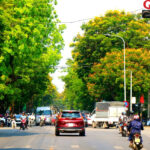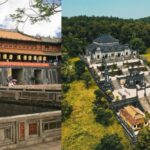Imperial City of Hue
The beauty of Hue’s Imperial City is not only limited to the daytime; at night, the place glows with a mesmerizing array of colors, leaving visitors in awe. Under the soft golden light, the royal architecture of Ngo Mon, Thai Hoa Palace, and The Mieu come alive with intricate carvings highlighted. The dragons, phoenixes, and floral patterns characteristic of the Nguyen dynasty seem to retell the glorious historical stories of Vietnam’s last feudal dynasty.
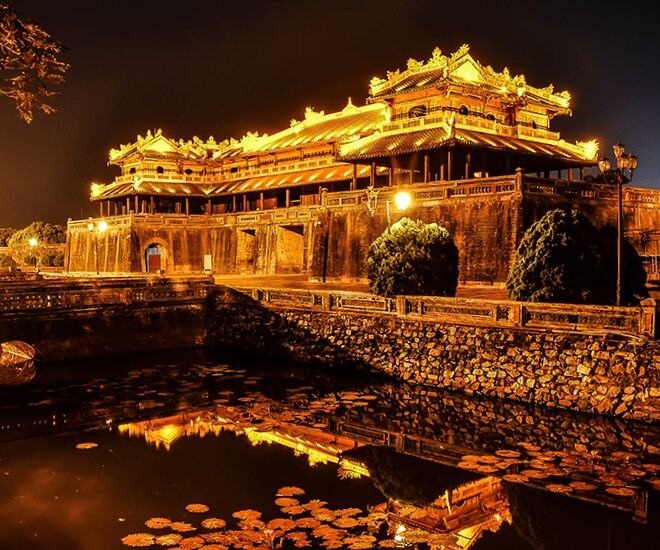
Hue’s Imperial City shimmers under the golden lights.
The night ambiance in the Imperial City is further enhanced by the gentle sounds of royal music and footsteps echoing on the ancient stone pavement. Traditional art performances, such as royal dances and Hue royal court music, held within the compound, create a harmonious blend of culture and history. Visitors not only get to explore but also immerse themselves in the artistic essence of the ancient capital.
Strolling through the Imperial City at night offers a sense of tranquility that differs from the daytime atmosphere. The soft light from the lanterns, the shadows of ancient trees on the ground, and the fresh air create a serene and soothing atmosphere. Especially, this experience gives visitors a sense of stepping back in time, detached from the modern world.
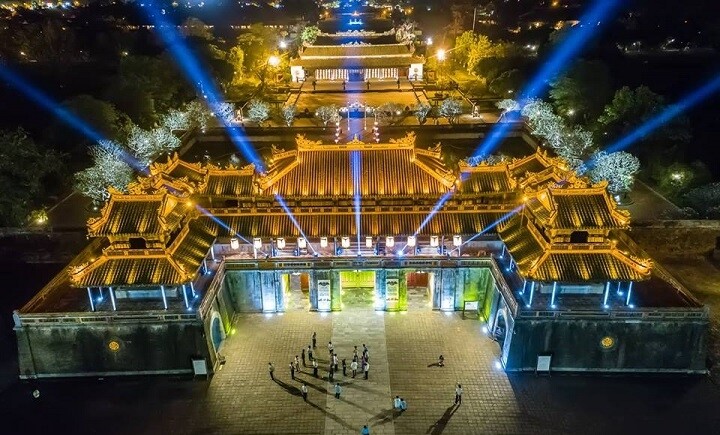
Visiting the Imperial City at night offers a chance to discover the serene, profound, and magnificent beauty of a World Cultural Heritage site. It is indeed a memorable experience when visiting the ancient capital.
Truong Tien Bridge
Truong Tien Bridge has long been a symbol of Hue. As night falls, this century-old bridge becomes even more special when the entire lighting system is turned on, gradually changing from silver to green, yellow, red, and purple… giving the place a magical and colorful appearance.
Moreover, visitors can also drop by the nearby Dong Ba Market, a place famous for selling Hue specialties and attracting thousands of tourists. Dong Ba Market offers a variety of delicious Hue specialties such as bun bo (beef noodles), banh loc (tamale-like dumplings), nam (steamed fermented pork rolls), and banh beo (steamed rice cakes)…
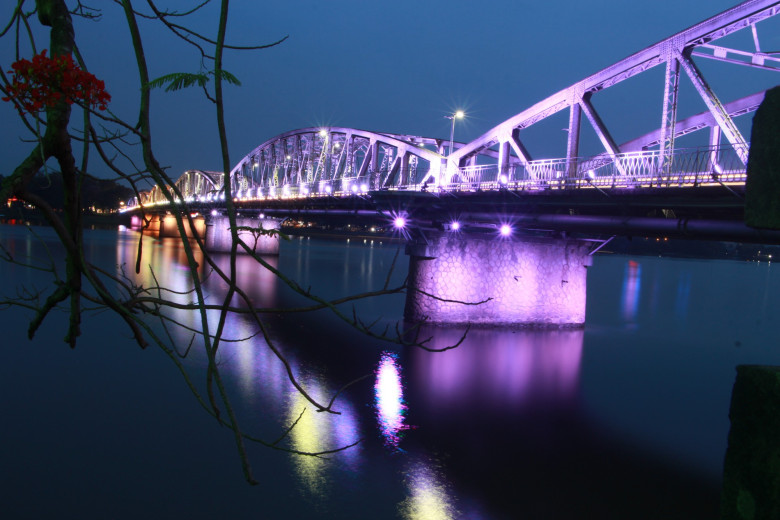
From a distance, you can admire the Truong Tien Bridge, strike a pose, and capture memories with this unique architecture and the romantic Perfume River.
Ca Hue on the Perfume River
Listening to Ca Hue (Hue folk songs) on the Perfume River is a unique experience, blending traditional art with the romantic natural scenery. As night falls, the gentle Perfume River transforms into a magnificent stage where artists perform the ancient melodies of Ca Hue, gentle and profound, that have existed for hundreds of years. The sound of musical instruments and the soft singing blend harmoniously, permeating the soul and providing a peaceful feeling amidst the poetic natural setting. This is not just a performance but also a journey to discover the soul and the cultural beauty of Hue at night.
Ca Hue has a diverse and rich repertoire of about 60 works of vocal and instrumental music in two major styles: Bac (North) and Nam (South). The Bac style is solemn and cheerful, with bright and vibrant tones such as co ban, long ngam, hanh van, and long diep… The Nam style is sentimental and profound, with a touch of sorrow and sadness in songs like Nam ai, Nam binh, and Tuong tu khuc… In addition to the two main styles, Ca Hue also incorporates various nuances like thuong, ai, xuan, and thien… to express different shades of emotions.
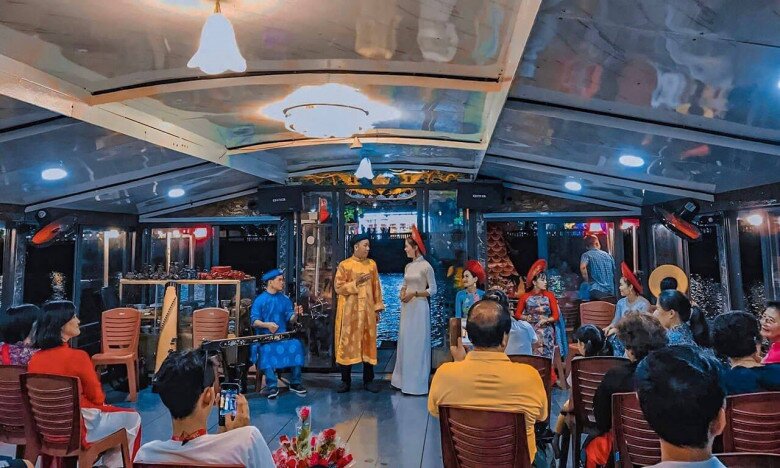
Listening to Ca Hue on the Perfume River is not just entertainment but also a journey to discover the culture and understand the soul of the dreamy Hue people.
A Ca Hue performance on the river usually lasts for an hour. Before concluding this fascinating journey, visitors can participate in a unique lantern release on the Perfume River. This is an age-old custom of the Hue people, wishing for peace and tranquility in life.
Hue Railway Station
Hue Railway Station is not just a transportation hub for passengers and cargo; it is also a “low-key” destination for travelers who prefer a quiet and peaceful atmosphere. The most distinctive feature of this area is the tea shops, locally known as “tra ga.” Here, you can enjoy a warm cup of tea and slowly savor some peanuts, sunflower seeds, or pumpkin seeds served on a small plate. Visitors gather to chat and share interesting stories about their lives.
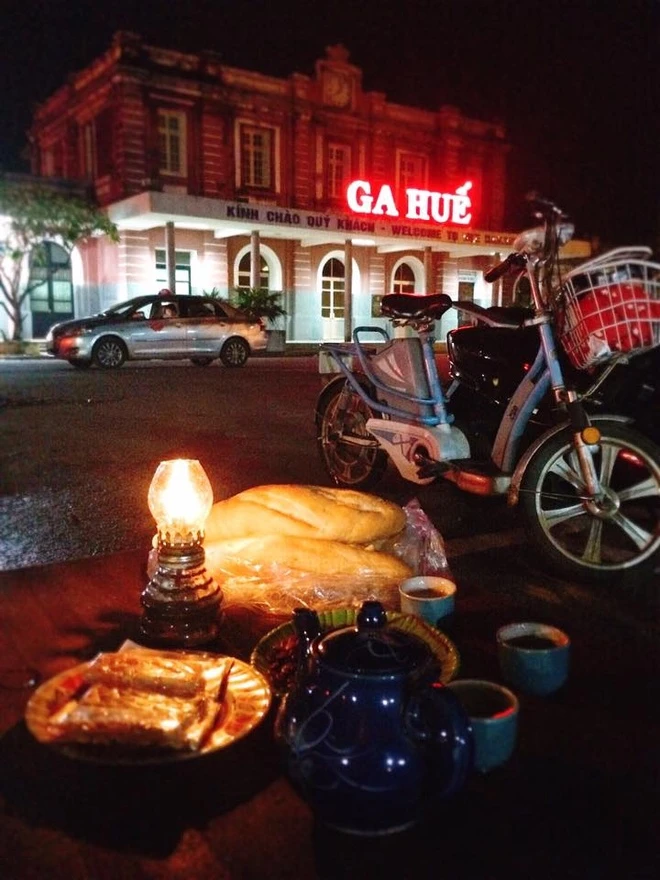
A unique feature of these tea shops is their use of oil lamps to illuminate each table, creating a nostalgic and ancient ambiance.
The tea menu typically includes traditional teas such as lotus tea, jasmine tea, and Hue royal court tea, carefully prepared to offer a refined and delicate flavor.
Han Thuyen Fish Cake Banh Canh
Han Thuyen Street, located within the Hue Imperial City, is famous for its long-established night banh canh (thick noodle soup) shops. Some of these shops have been associated with the ancient capital for decades, becoming a familiar stop for generations. Amid the quiet night atmosphere, these shops quietly await customers to savor their flavorful dishes.
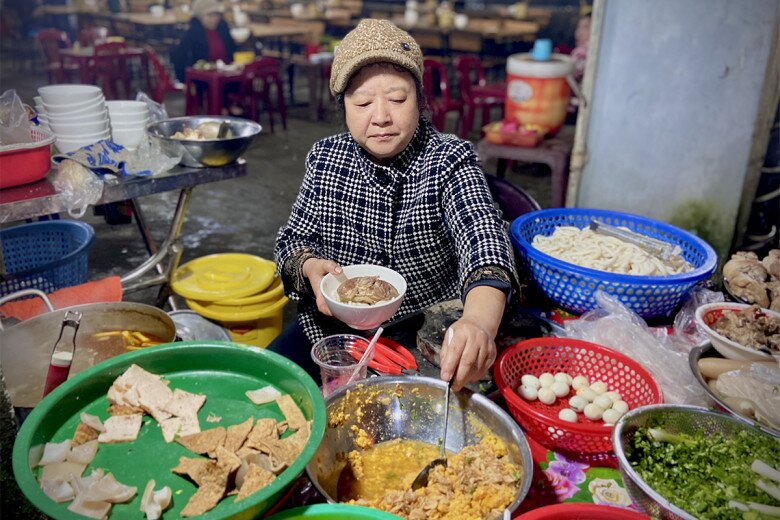
Han Thuyen banh canh is a delicate blend of soft and chewy noodles, rich broth, and various toppings. Crispy pork rind, quail eggs, crab cakes, fish cakes, or pork hocks simmered for hours create a harmonious and appealing dish.
For just 20,000-30,000 VND, you can enjoy a hearty and delicious bowl of banh canh that will satisfy even the most discerning palates. It is not just a late-night snack but also a unique culinary experience, allowing you to appreciate the simplicity and authenticity of Hue cuisine.
Hue Desserts
Mentioning Hue’s night snacks without including its diverse desserts would be a significant oversight. Hue desserts are varied, and some popular options include long nhan hat sen (dessert with lotus seeds and longan), thap cam (mixed dessert), dau den (black bean dessert), khoai mon (taro dessert), dau trang (white bean dessert), bot loc (sticky rice balls), and che heo quay (roasted pork dessert)…
Indulging in Hue desserts at night is a delightful experience as you stroll along peaceful streets, enjoying the cool breeze and sweet, refreshing flavors. Some famous spots to enjoy Hue desserts include Che Hem at 29 Hung Vuong Street, Che Hem Cung Dinh Hue at 93 Xuan 68 Street, Che Huong at 78 Mai Thuc Loan Street, and Che Mo Ton Dich on Phan Chu Trinh Street…
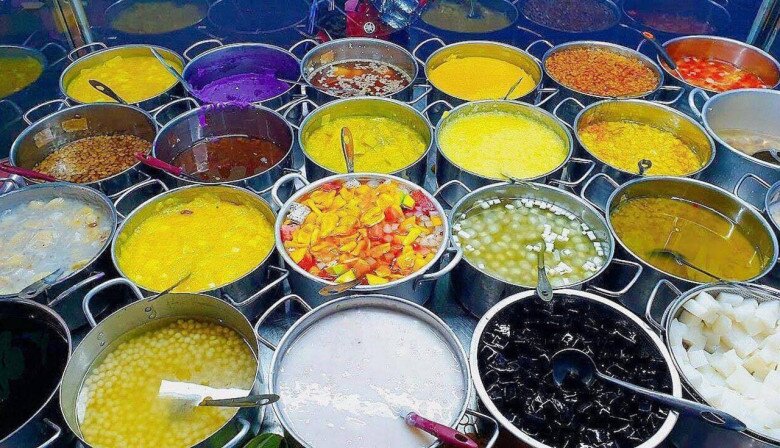
Stopping by one of these renowned dessert shops, you will be charmed not only by the sweetness of the treats but also by the simple and friendly service style of the Hue people.
With their diversity and richness, Hue desserts are not just ordinary sweets but a subtle combination of rustic ingredients and skillful cooking techniques. Whether it’s the elegant che hat sen (lotus seed dessert), the chewy che bap (corn dessert), the soft che dau ngu (black bean dessert), or the fragrant che troi nuoc (glutinous rice balls in ginger syrup), each dish embodies the essence of the ancient capital.

























